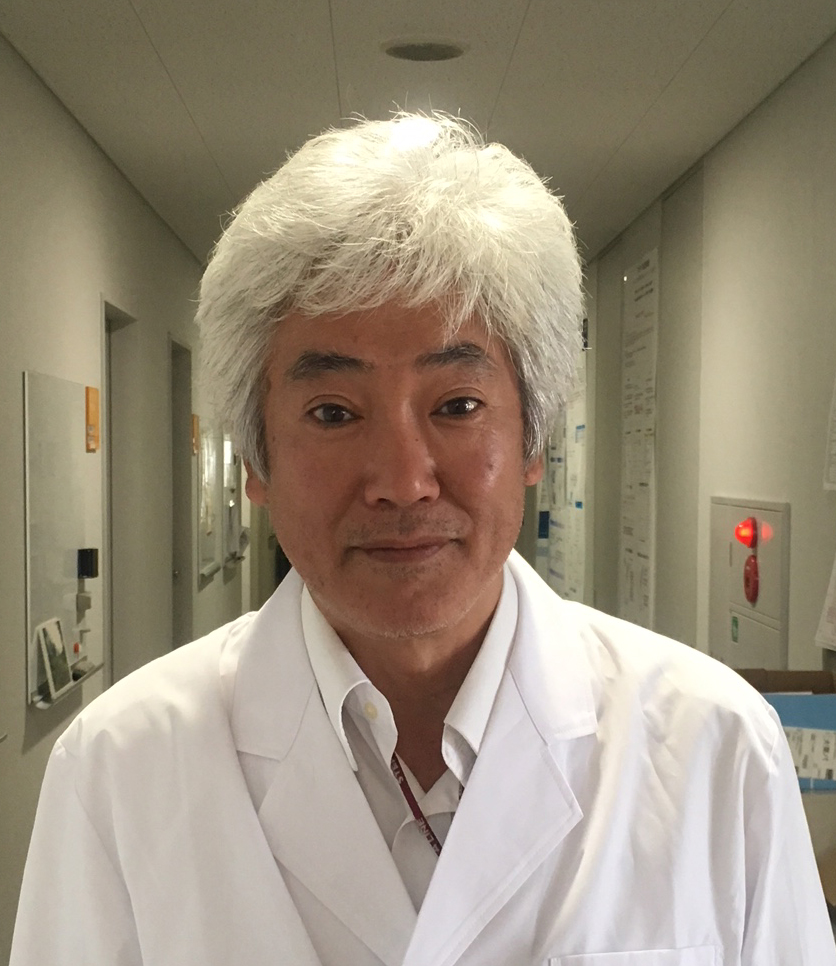
Structural Biology Conference
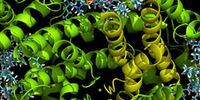
Theme: Anticipating Innovations in Structural Biology
About Us:
Meetings International invites all the participants from all over the world to attend “Structural Biology Conference 2018”, which will be held during 06-07 August 2018 at Dubai, UAE.
Structural Biology Conference 2018 contributes opportunities to Scientists, research scholars, students, delegates and exhibitors to enhance their skills and improve quality of research. We welcome you to go along with us at the Structural Biology Conference 2018, where you will make certain to have an important involvement with both your colleagues and experts from around the globe. It helps you to implement practical, proven strategies to run your research more effectively, efficiently and profitably. All individuals from the Structural Biology 2018 sorting out council anticipate meeting you in Dubai.
Meetings International:
welcomes all the Directors/Managers & Business Delegates, Founders, Director of Laboratories, Universities, Industries, Investigators, Post-Doctoral Fellows, Research and Diagnostic Laboratories, Clinical Fellows, Students, Technology Experts, Biomedical Research companies research scholars, industrial professionals and student delegates from Biology sectors to be a part of the esteemed Structural Biology 2018 Conference. As this will be the best amalgamation of academia and research involving every aspect of novel imaging techniques and drug designing. It is open to all types of research methodologies both from academia and industry.
Structural Biology 2018 includes all the scientific sessions mostly related to structural biology. The Sessions almost cover all the recent research topics such as
- Structural Biology
- Computational Analysis
- Structure Prediction by Hybrid Approach
- Gene Regulation and Cell Signaling
- Molecular Modeling and Dynamics
- Structural Bioinformatics
- Structural Biology Databases
- Drug Designing & Biomarkers
- Biophysics
- Novel Imaging Technique
- Cancer Immunotherapy
- Structural Biology for Virus Research
- Structural Biology Complexity Arenas
- Advances and Innovations in Structural Biology
Why Dubai?
Dubai is one of the seven emirates which make up the United Arab Emirates (UAE). It has become known as the country that is called “a wonder of the world”; as it is a city of skyscrapers, beautiful homes with swimming pools, the largest malls, the best 7-star hotels and golf courses which arise out of the middle of the desert. Dubai has always put a strong emphasis in education. For the research of structural biology, the most popular universities like Zayed University and Biotechnology University college Dubai (BUC) are there. Other branch Campus universities are also located in Dubai help to improve latest imaging technology and research in Structural Biology.
Structural Biology Conference | Biophysics Conference | Biochemistry Conferences | Drugs Designing Conference | Bioinformatics Meeting | Cancer Immunotherapy Meeting | Structural Virology Meeting | Biochemistry Events
Session 1: Structural Biology
Structural Biology Conference provides scope for all biologists, biochemists and all the people who are interested in macromolecular structure and function. It includes the topics biochemistry, alternations in protein structure, biological system, proteomics, expression proteomics. Structural biology is a branch of molecular biology which deals with biophysics and biochemistry regarding the molecular structure of biological macromolecules. The aims of structural biology include a comprehensive understanding of the molecular shapes and forms embraced by biological macromolecules and extending this knowledge to understand how different molecular architectures are used to perform the chemical reactions that are central to life. Biologists show great interest in understanding related processes such as protein folding, protein dynamics, molecular modeling, drug design, and computational biology. This process of determination of structures of proteins, nucleic acids may take years as the shape, size and assemblies of these molecules may be altering the function.
Structural Biology Conference | Biophysics Conference | Biochemistry Conferences | Bioinformatics Meeting | Cancer Immunotherapy Meeting | Structural Virology Meeting | Biochemistry Events
Session 2: Computational Analysis
Structural Biology Conference gives opportunity to all the computational biologists want to keep pushing the boundaries of biology using new technologies of computer science, which discuss on homology modeling, Ab-initio method, threading, sequence based Modeling. Computational Analysis seeks to Provide a forum for the exchange of information in the field of computational molecular biology and post genome bioinformatics, with emphasis on the documentation of new algorithms and databases that allows the development of biomedical research and bioinformatics in a significant manner.
Structural Biology Conference | Biophysics Conference | Biochemistry Conferences | Bioinformatics Meeting | Cancer Immunotherapy Meeting | Structural Virology Meeting | Biochemistry Events
Session 3: Structure Prediction by Hybrid Approach
Structural Biology Conference focus on Structure Prediction by Hybrid Approach and Sequence Analysis, which involves the topics profile comparison, sequence analysis, gene prediction, protein structure determination. Hydrophobic interactions are a noteworthy power in protein folding and various hydropathy scales have been produced to evaluate the relative hydrophobicity of the amino acids. Hydropathy profiles can be used to examine the surface features of proteins in order to generate hypotheses that can be confirmed experimentally. Sequence analysis can be explained as a process of exposing DNA, RNA or peptide sequence to a wide range of analytical methods in order to understand its structure, function and evolution. The methods include sequence alignment, biological databases. The sequences are being compared to that of the known functions, harmoniously to understand the biology of the organism which gives the new sequence. Synergistic use of three-dimensional structures and deep sequencing is done to realize the effect of personalized medicine.
Structural Biology Conference | Biophysics Conference | Biochemistry Conferences | Bioinformatics Meeting | Cancer Immunotherapy Meeting | Structural Virology Meeting | Biochemistry Events
Session 4: Gene Regulation and Cell Signaling
Structural Biology Conference focus on all the mechanisms of gene regulations which is easy to know the related subjects like gene control regions, protein crystallography, G-protein couple receptor, GPCR. In order to react to changes in their immediate environment, cells must be able to receive and process signals that originate outside their borders. Cells consistently communicate by the release of chemical signals. They are often secreted from the cell and released into the extracellular space. Regulation of gene expression comprises a comprehensive range of mechanisms that are used by cells to regulate the production of specific gene products, and is familiarly termed as gene regulation. regulated to produce the end point response. Sophisticated programs of gene expression are extensively observed in biology, for example to trigger developmental pathways, adapt to new food sources, or respond to environmental stimuli. Eventually the gene expressions can be adjusted, starting from transcription, initiation to post translation modification of a protein.
Structural Biology Conference | Biophysics Conference | Biochemistry Conferences | Bioinformatics Meeting | Cancer Immunotherapy Meeting | Structural Virology Meeting | Biochemistry Events
Session 5: Molecular Modeling and Dynamics
Structural Biology Conference gives chance to know the computer based strategies of Molecular Modeling and Molecular Dynamics, which based on protein folding, enzyme catalysis, molecular conformation, steered molecular dynamics (SMD), potentials in ab initio methods, molecular dynamic simulation. Molecular modeling is an accumulation of computer based strategies for representing, deriving and manipulating the reactions and structures of molecules. These properties are reliant on these three-dimensional structures. Molecular modeling encompasses all methods, theoretical and computational, used to model or mimic the behavior of molecules. Molecular dynamics (MD) deals with the study of physical movements of the atoms and molecules using computer simulation method, so it is referred to as one of the type of N-body simulation. The atoms and molecules are allowed to interact for a fixed period of time, giving a view of the dynamic evolution of the system. The trajectories of atoms and molecules are commonly determined by solving them numerically using Newton’s equations of motion for a group of collaborating particles. The forces between the particles and their potential energies are calculated using inter-atomic potentials or molecular mechanics force fields.
Structural Biology Conference | Biophysics Conference | Biochemistry Conferences | Bioinformatics Meeting | Cancer Immunotherapy Meeting | Structural Virology Meeting | Biochemistry Events
Session 6: Structural Bioinformatics
Structural Biology Conference discuss on Bioinformatics which involves protein data banks, amino acid sequence, data annotation, molecular modelling. Bioinformatics is an integrative field that creates strategies and programming instruments for understanding biological information. Bioinformatics provides a forum for the exchange of information in the fields of computational molecular biology and post-genome bioinformatics, with emphasis on the documentation of new algorithms and databases that allows the development of biomedical research and bioinformatics in a significant manner. Structural Bioinformatics databases also offer enormous possibilities for gathering analysis of available information about biomacromolecules and in broadening the possibility of analysis.
Structural Biology Conference | Biophysics Conference | Biochemistry Conferences | Bioinformatics Meeting | Cancer Immunotherapy Meeting | Structural Virology Meeting | Biochemistry Events
Session 7: Structural Biology Databases
Structural Biology Conference offers to know about Structural Biology Databases which covers the topics are functional databases, electron microscopy data bank, classification of structural database, classification of protein structure. Biological databases play a fundamental role in bioinformatics. A database is an organized collection of data. It refers both to the data and to the organization of that data. As a result of enormous research which is being done in Structural biology massive data has been produced. In order to assemble the data in a catalogued manner, bioinformatics databases are used. Various databases have been created to store biological data, such as sequence databases, structure databases, signaling pathway databases, etc. They offer scientists the opportunity to access a wide variety of biologically relevant data, including the genomic sequences of an increasingly broad range of organisms.
Functional databases, Electron microscopy data bank, Classification of structural database, Classification of protein structure.
Structural Biology Conference | Biophysics Conference | Biochemistry Conferences | Bioinformatics Meeting | Cancer Immunotherapy Meeting | Structural Virology Meeting | Biochemistry Events
Session 8: Drug Designing & Biomarkers
Structural Biology Conference invites all the researcher, Chemists, Pharmacists to make their research easier about Drug Design, which mainly involves in ligand-based drug design, structure-based drug design, drug resistance, biomarkers. Drug Design or rational design or rational drug design, is the creative method of finding innovative medications supported the data of a biological sciences target. The drug is most commonly associate degree organic little molecule that activates or inhibits the perform of a bio-molecule like a macro-molecule organic chemistry, that successively ends up in a therapeutic profit to the patient. Including the modest sense, drug design associates the planning of molecules that are opposite in form and charge to the bio molecular target with that they move and thus can bind to that. Drug design of times however not essentially depends on laptop modeling techniques. This sort of modeling is typically observed as computer-aided drug design. Biomarkers consist of tools and technologies that aids in dynamic and powerful approach to learn the spectrum of neurological diseases in knowing the prediction, cause, diagnosis, progression, regression, or outcome of treatment of a disease. Biomarkers are the measures used to perform a clinical assessment such as blood pressure or cholesterol level and are used to monitor and predict health states in individuals or beyond populations so that appropriate therapeutic intervention can be planned.
Structural Biology Conference | Biophysics Conference | Biochemistry Conferences | Bioinformatics Meeting | Cancer Immunotherapy Meeting | Structural Virology Meeting | Biochemistry Events
Session 9: Biophysics
Structural Biology Conference basically focus on Biophysics which depends on the topic biophysical studies on activators & inhibitors, cellular biophysics, molecular biophysics. Biophysics is the combination of Biology and Physics, which helps to study physical phenomena and physical processes in living things, on scales spanning molecules, cells, tissues and organisms. Biophysicists use the principles and methods of physics to understand biological systems. Modern biophysics also encompasses physical measurements with computational models to find out the detailed physical mechanisms underlying the behavior of complex biological systems. It is an interdisciplinary science, closely related to quantitative and systems biology. Biophysics is a growing enterprise world-wide, driven primarily by the widespread realization of the major contributions made to biological science by a combination of truly state-of-the-art physical measurements with modern molecular biology.
Structural Biology Conference | Biophysics Conference | Biochemistry Conferences | Bioinformatics Meeting | Cancer Immunotherapy Meeting | Structural Virology Meeting | Biochemistry Events
Session 10: Novel Imaging Technique
Structural Biology Conference gives more importance to Novel Imaging Techniques which covers the topics x-ray crystallography, NMR, powder diffractometry, mass spectroscopy, ultra-faster laser spectroscopy. Biomolecules are too small to observe in detail, even with the most advanced light microscopes. These may include macro and micro molecules along with natural products. These may be endogenous and exogenous in nature. Structural biologists generally use these methods to determine the structures of identical molecules in a huge quantity at a time. Scientists use these methods to study the “real states” of the biomolecules. Some of the best methods include X-ray-crystallography, Cryo-Electron Microscopy, Nuclear Magnetic Resonance and Ultra-fast laser Spectroscopy etc.
Structural Biology Conference | Biophysics Conference | Biochemistry Conferences | Bioinformatics Meeting | Cancer Immunotherapy Meeting | Structural Virology Meeting | Biochemistry Events
Session 11: Cancer Immunotherapy
Structural Biology Conference offers chance to the researches to discuss the most recent topic Cancer Immunotherapy which mainly focus on molecular mechanism of cancer initiation, cancer vaccines, non-specific immunotherapies, oncologic drug targets. The main aim of integrating structural biology data into cancer research is to design and discover novel and effective drugs to cure the disease. Structural biology combined with molecular modelling mainly aims at drug designing. Today’s most encouraging cancer therapy is immunotherapy. These treatments stimulate the patient’s immune system to destroy his/her cancer cells. Some drugs recognize specific molecules on the surface of cancer cells while others can bind to immune cells to help them kill cancer cells. This can be done mostly in two ways such as
- Stimulating your own immune system to work harder or smarter to attack cancer cells
- Giving you immune system components, such as man-made immune system proteins
Consequently, many Structural Biologists are conducting cancer research, to speed-up the process of understanding the mechanism of biomolecules in order to improve the newer cancer therapies.
Structural Biology Conference | Biophysics Conference | Biochemistry Conferences | Bioinformatics Meeting | Cancer Immunotherapy Meeting | Structural Virology Meeting | Biochemistry Events
Session 12: Structural Biology for Virus Research:
Structural Biology Conference focus on Virus Research. Viruses show different morphologies in their shapes and sizes. These are smaller in structures than the bacteria. Though these are simpler as an individual, when formed in group they are exceptionally diverse both in replication strategies and structures. Many viruses are important human pathogens. Many techniques such as X-ray crystallography, mass spectrometry, fluorescence microscopy, multi-angle light scattering, differential scanning fluorimetry, isothermal titration calorimetry, surface plasmon resonance and fluorescence anisotropy. These structure in-turn are used to develop anti-viral drugs and vaccines. The related topics are virus fusion and entry, virus assembly & maturation, cryo-electron microscopy, cryo-electron, tomography, vaccine, prophylactic antibody and anti-viral development.
Structural Biology Conference | Biophysics Conference | Biochemistry Conferences | Bioinformatics Meeting | Cancer Immunotherapy Meeting | Structural Virology Meeting | Biochemistry Events
Session 13: Structural Biology Complexity Arenas:
Structural Biology Conference gives more priority to Structural biology Complexity Arenas, which based on Nano-machinery, network signaling, protein Folding. Structural biology means at understanding biomolecules at atomic level. All the aspects in structural biology investigate appear to be complex. Research methods have proved to be successful in solving many of the complexities such as protein structure determination, functional annotations and drug designing. As they are solved on large scale, a gap forms between the structure data and the sequence data. Bridging this gap is one of the important tasks. Some of the complex areas are signaling proteins, protein folding and intrinsically disordered proteins.
Structural Biology Conference | Biophysics Conference | Biochemistry Conferences | Bioinformatics Meeting | Cancer Immunotherapy Meeting | Structural Virology Meeting | Biochemistry Events
Session 14: Advances and Innovations in Structural Biology
Structural Biology Conference welcomes all the Scientists, Researchers, Professors and Students to increase their knowledge in Advances and Innovations in Structural Biology. Structural biology is one of the developing fields. In the course of time many improvements have been taking place. Huge numbers of solved structures have exaggerated rapidly. The field of drug design and drug discovery has been advanced. Functional annotations are another field where progressions are rapidly evolving. Alterations in-order-to improve the effectiveness of prevailing tools can also be noted. Remarkable advances have been made in the areas of technical imaging and advancement of hybrid methods to understand the structure and function of proteins. The related topics which is discuss in the conference are novel methods of structure prediction, advances in drug design, advances in instrument development, recent imaging technologies.
Structural Biology Conference | Biophysics Conference | Biochemistry Conferences | Bioinformatics Meeting | Cancer Immunotherapy Meeting | Structural Virology Meeting | Biochemistry Events
Market Research:
Structural Biology is defined as the study of structure of biological molecules by using a variety of imaging techniques. Biomolecules are too small to see in detail, so scientists view them in 3D structures to observe their structure, function and the interaction between them. Mostly X-ray crystallography, nuclear magnetic resonance, cryo-electron microscopy and computational methods are used. By using this methods researcher understand how the thousands of different molecules in each of our cells work together to keep us healthy. To make the research more efficiently Structural biology 2018 deals with topics like, experimental and computational approaches in Structure prediction, Structural Bioinformatics, Cell signaling, molecular modelling and dynamics, drug designing, sequence analysis, databases and Novel imaging techniques used for structure prediction.
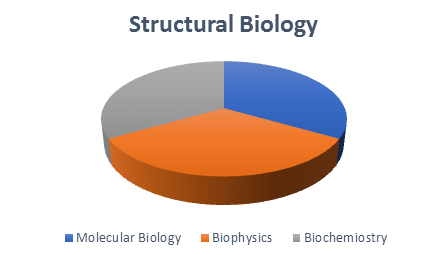
Global Business & Research on Structural Biology:
The Structural Biology market is expected to reach tentatively USD 13.1 billion by 2025. It is very important to develop the research quality in the field of structural biology to discover medicines for the disease like Cancer, Diabetes, Alzheimer’s Disease. Additionally, developing drug resistance together with the high drug attrition rate is engendering the requirement for extensive R&D activities, which is presumed to boost the adoption of structural biology & molecular modeling techniques in the drug discovery and development process. This is expected to serve as an efficient approach in fast tracking the development of drugs with high potency.
The increasing demand for molecular modelling techniques is predominantly attributable to the significant cost reduction enabled. This is due to the fact that prediction software identifies possible adverse reactions and determines drug efficacy and toxicity in the pre-clinical stages, thereby reducing the probability of druf failure at the later stages. Consequently, the above-mentioned factors serve as prominent reasons responsible for the widened market demand
Top Audience at Structural Biology Conference:
Directors/Managers & Business Delegates, Founders, Director of Laboratories, Universities, Industries, Investigators, Post-Doctoral Fellows, Research and Diagnostic Laboratories, Clinical Fellows, Research Scholars, Students, Technology Experts, Biomedical Research companies.
Rise in the number of clinical trials, toxicological studies, and health awareness for nutritional products, rapid growth of structural biology analytical instruments, software and solutions, and use of structural biology as a base for drug designing will propel the growth and development of pharmaceuticals market.
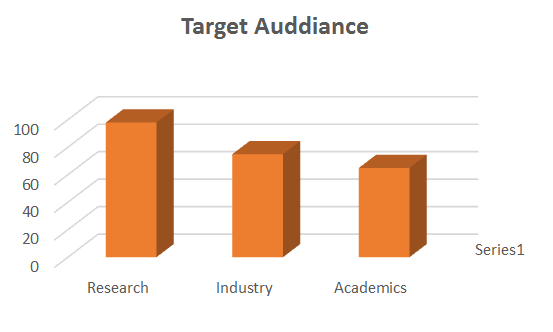
Global Universities of Structural Biology
- Harvard University
- Massachusetts Institute of Technology
- University of Cambridge
- University of Oxford
- Stanford University
- University of California
- Yale University
- The University of Tokyo
- Cornell University
- Princeton University
- Imperial College, London
- National University of Singapore
- University of Pennsylvania
- The University of Melbourne
- University of Washington
Universities of Dubai
- University of Birmingham Dubai
- King Abdullah University of Science and Technology
- University of Wollongong
- University of Dubai
- Zayed University
- Biotechnology University College Dubai
- British university in Dubai
- American University in the Emirates (AUE)
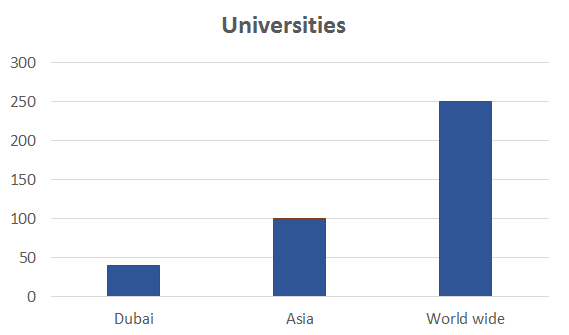
Global Research centres
- MIT department of Biology
- Structural Biology NMR Facility - University of Minnesota
- European Molecular Biology laboratory
- RIKEN Advanced Institute for Computational Science, Tokyo
- Cambridge Institute for Medical Research, University of Cambridge
- Max Planck Society, Germany
- UCLA, Chemistry & Biochemistry
- Department of Anatomy and Structural Biology, Einstein College
- Department of Structural and Cellular Biology - Tulane University
- Structural Biology — Penn State University
- Chemical and Structural Biology – The Rockfeller University
- New York Structural Biology Center
- Structural Biology- Penn State University
- Center for Structural Biology - University of Illinois at Chicago
- Department of Cellular and Structural Biology – UT Health Science Center
Associations related to Structural Biology
- The American Society for Cell Biology
- American Crystallographic Association
- The British Society for Immunology (BSI)
- New England Structural Biology Association
- International Society for Computational Biology
- Bioinformatics society of India
- Max Planck Society, Germany
- German Society for Cell Biology
- Australian Society for Biochemistry and Molecular Biology
- Australian Society for Biophysics
- American Society for Mass Spectrometry
- European Crystallographic Association
- Iran Society for Cell Biology
- Chinese Society for Cell Biology
- Australia and New Zealand Society for Cell and Developmental Biology
- Asian Pacific Organization for Cell Biology
- Ukrainian Society of Cell Biology
- Sociedad de Biología Cellular de Chile
- The Korean Society for Molecular and Cellular Biology
- Indian Society of Cell Biology
- The Philippine Society for Cell Biology
- UP Cell Biological Society
- French Societies for Cell Biology
- The Brazilian Society for Cell Biology
- Swiss Society for Cell Biology
Global Funding Bodies
NIH allots nearly $65 million annually for the determination of protein structure. National Institute on Drug Abuse (NIDA), Prevention Research, has funded $358.1 million in 2015. Annually, the California state invests $10-12 million in cancer research, while The National Cancer Institute (NCI) in United States spends $4.8 to $5.2 billion in cancer research. The University of Leeds is financing £17 million in a state-of-the-art laboratory for structural biology research. With the recent request for applications, the NIGMS expects to support three to six large research centers at a level of up to $3 million per center.
Importance & Future Scope:
Structural Biology an expand interrelated science used to predict three-dimensional structures of proteins of unknown structure and the interactions between them at a time to keep us healthy. It also helps to design new proteins using new computational techniques.
The research continues to develop our understanding of the distinct roles molecules play in biology and to spur advances in medicine. The structural Biology is also used in the Pharmaceutical Industries to increase innovative methods of drug designing, disease diagnosis, treatment and prevention. This gives an expansion of the pharmaceutical industries boosting the growth for Animal & Human Health Care
- Structural Biology
- Computational Analysis
- Structure Prediction by Hybrid Approach
- Gene Regulation and Cell Signaling
- Molecular Modeling and Dynamics
- Structural Bioinformatics
- Structural Biology Databases
- Drug Designing & Biomarkers
- Biophysics
- Novel Imaging Technique
- Cancer Immunotherapy
- Structural Biology for Virus Research
- Structural Biology Complexity Arenas
- Advances and Innovations in Structural Biology
- Journal of Applied Bioinformatics & Computational Biology
- Journal of Molecular Biology and Methods
- Journal of Proteomics & Enzymology


